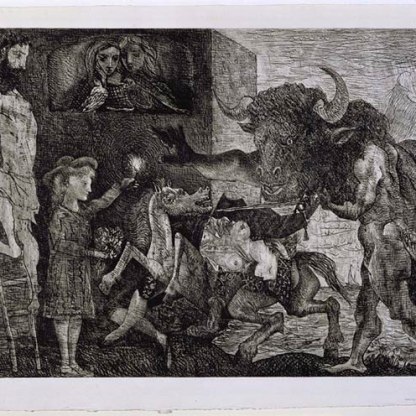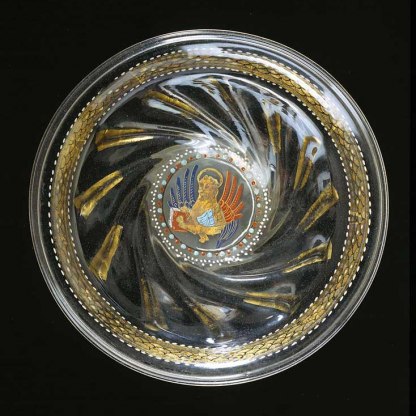The Symbols of the Evangelists
At 1, 4–14, the author of the Old Testament Book of Ezekiel records a striking vision.
And I looked, and, behold, a whirlwind came out of the north, a great cloud, and a fire unfolding itself, and a brightness was about it, and out of the midst thereof as the colour of amber, out of the midst of the fire.
Also out of the midst thereof came the likeness of four living creatures. And this was their appearance; they had the likeness of a man.
And every one had four faces, and every one had four wings, as for the likeness of their faces, they four had the face of a man, the face of a lion on the right side: and they four had the face of an ox on the left side; they four also had the face of an eagle.
In the Book of Revelation, 4, 5–8, St John sees similar creatures surrounding the throne of heaven.
... and round about the throne were four beasts full of eyes before and behind.
And the first beast was like a lion, and the second beast was like a calf, and the third beast had a face as a man, and the fourth beast was like a flying eagle.
Over time, these four beasts sitting beneath the throne of God, were interpreted as symbols of the four Evangelists – Matthew, Mark, Luke and John. Artists simplified the complex forms described in Ezekiel's vision. The four illustrations below are taken from a fifteenth-century French Book of Hours in the Fitzwilliam [MS.62].
A winged man, or angel, came to represent St Matthew, because his book opens with the human ancestors of Jesus [folio 16v].
A winged lion stands for St Mark because he emphasises the royal dignity of Christ, and opens his book with John the Baptist roaring like a lion in the wilderness [folio 18v].
St Luke is suggested by the ox, a sacrificial animal, because his Gospel stresses the sacrificial nature of Christ's ministry and opens with Zechariah performing his priestly duties [folio 14v]. The ox here is winged.
And a winged eagle, the creature that dwells closest to heaven, symbolises St John, because of his visions and the heavenly opening of his Gospel [folio 13r].
An oil sketch by Rubens in the Fitzwilliam [242] shows the four Evangelists together, accompanied by their symbols. Sometimes the symbols are depicted surrounding the figure of Christ in glory, as in another Book of Hours from the Fitzwilliam [MS.3-1954.f.27r].
Other highlight objects you might like
Other pathways and stories you might like
Sign up to our emails
Be the first to hear about our news, exhibitions, events and more…






